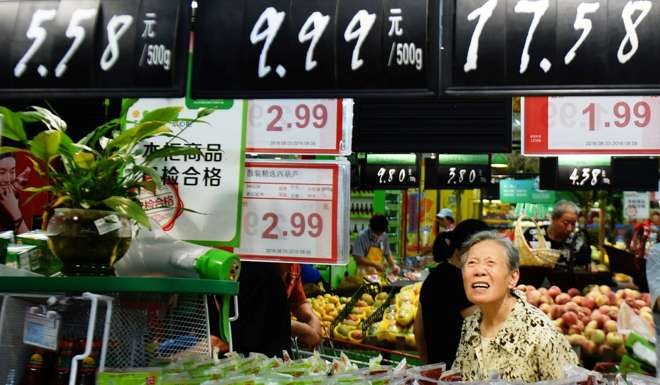
Talk of an inflation scare is far too premature
The IMF expects the average inflation rate in developed economies to pick up to 0.8pc by year end – still less than half of the main central banks’ 2pc targets
Is global inflation starting to rear its ugly head? The very question seems absurd.
According to the latest World Economic Outlook report from the International Monetary Fund (IMF), published earlier this month and tellingly entitled “Subdued Demand”, global growth in the first-half of this year was just 2.9 per cent, even weaker than in the first-half of 2015 and lower than what the IMF was predicting in the spring.
While the slowdown is “mostly a product of softer activity in advanced economies”, exacerbated by the uncertainty stemming from Britain’s decision to vote to leave the European Union (EU), even the outlook for emerging markets (EMs) is “uneven and generally weaker than in the past,” according to the Fund. China’s downturn, coupled with high corporate debt, declining profitability and weak balance sheets in a number of other large EMs, are dampening economic activity in developing countries.
This bleak economic backdrop is, not surprisingly, keeping a firm lid on inflation.
Having fallen to a mere 0.3 per cent in advanced economies last year – the lowest average annual inflation rate since the 2008 global financial crisis – consumer prices edged up slightly to 0.5 per cent in the first-half of this year as the drag from lower oil prices faded.
The IMF expects the average inflation rate in developed economies to pick up to 0.8 per cent by the end of this year – still less than half of the main central banks’ 2 per cent targets.
Worryingly for investors, inflation is also picking up in the US, making it more likely that the Federal Reserve will raise interest rates in December
Yet in the last few months, inflationary pressures have begun to build in a number of countries.
The most conspicuous rise in consumer prices is in the UK. On Tuesday, Britain’s Office of National Statistics announced that the country’s headline inflation rate shot up from 0.6 per cent year-on-year to 1 per cent last month – its highest level in almost two years – mainly as a result of the 17 per cent fall in sterling following the Brexit vote.
The collapse in the pound has pushed up import prices (the UK imports more than half of its food and almost half of its energy), fuelling concerns about a fall in living standards.
More worryingly for investors, inflation is also picking up in the US, making it more likely that the Federal Reserve will raise interest rates in December.

Even in the much weaker eurozone economy, headline inflation is climbing, rising from minus 0.1 per cent as recently as May to 0.4 per cebt last month.
Still, there is a world of difference between the end of a global deflation scare and a worrying increase in inflation. All the data over the past few months strongly suggest that it the former which best characterises the recent trend in global consumer prices.
The clearest example of this is in China, one of the most important sources of the deflationary pressures that have gripped the global economy over the last several years.
Last Friday, a report from the country’s National Bureau of Statistics showed that China emerged from producer price deflation last month for the first time since January 2012, with factory gate prices rising 0.1 per cent on an annualised basis.
There is ample scope for deflationary forces to reassert themselves given persistent over-supply in large parts of China’s economy. The IMF expects headline inflation in China to reach 3 per cent over the medium term
China’s consumer price index (CPI), the main gauge of inflation, grew 1.9 per cent year on year in September, up from the 1.3 per cent rise in August, the Bureau said.
For the fifth-consecutive month, figures were lower than the 2.3 per cent registered in April, when the CPI reached its highest level since July 2014. So Chinese inflation is hardly roaring back to life.
There is ample scope for deflationary forces to reassert themselves given persistent over-supply in large parts of China’s economy. The IMF expects headline inflation in China to reach 3 per cent “over the medium term” amid persistent, albeit diminishing, “slack in the industrial sector and downward pressure on goods”.
Even in the US, core inflation – which excludes volatile food and energy prices – softened last month, strengthening the case for a gradual rise in rates.
In Japan, the world’s third-largest economy, headline inflation has been negative for six consecutive months while the core rate has dropped to just 0.2 per cent, dragged down by the nearly 15 per cent rise in the yen against the dollar since the end of January. The Bank of Japan’s 2 per cent inflation target is looking more elusive by the day.
Make no mistake, talk of a global inflation scare is far too premature.
While it is encouraging that inflation is beginning to show signs of life, growth is still, as the IMF correctly states, worryingly subdued.
Nicholas Spiro is partner of Lauressa Advisory

